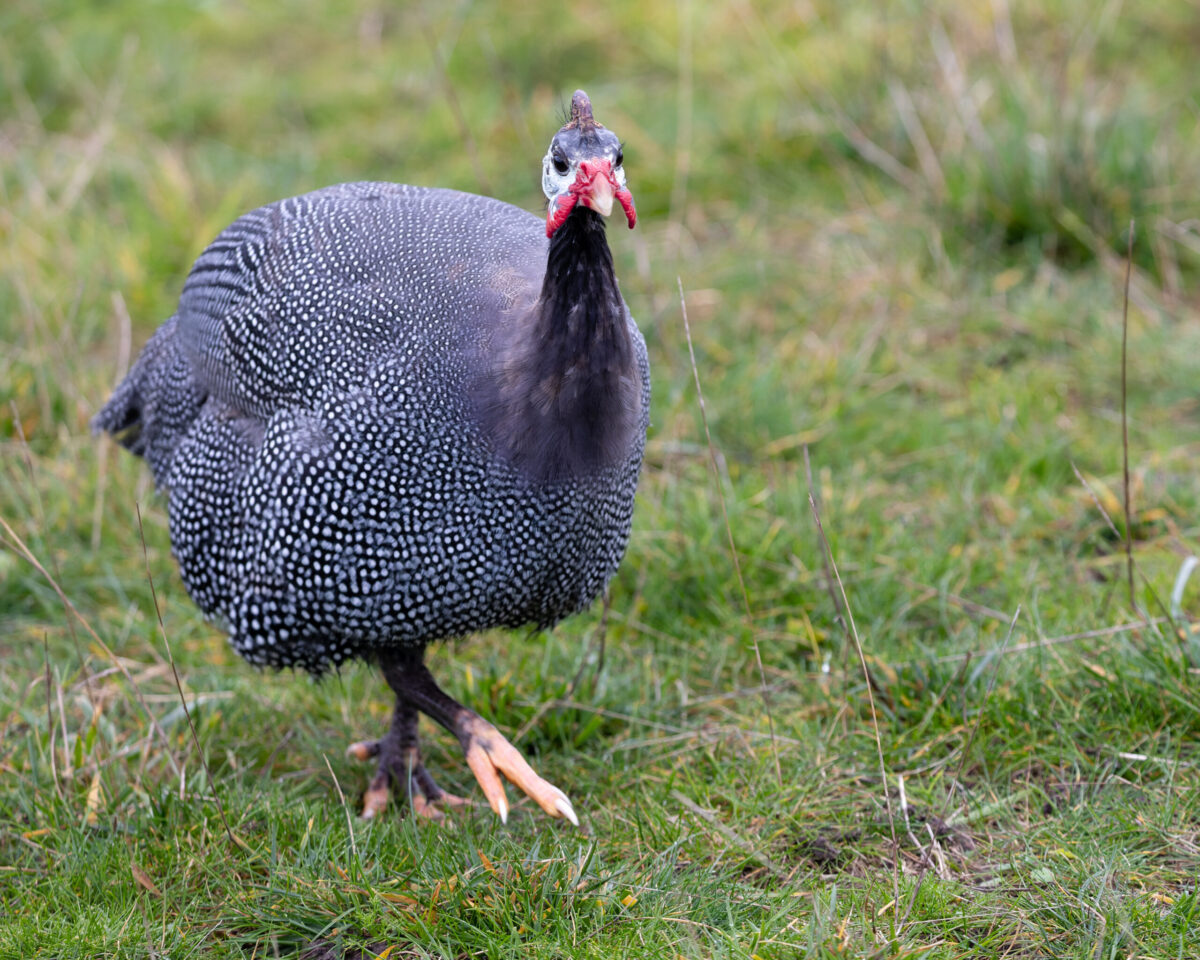Glorious guineafowl, splendid sainfoin!

You may be wondering why we call them glorious guineafowl and splendid sainfoin – read on to find out why they’re an amazing resource for us at Watatunga!
Guineafowl: Natural Tick Controllers
Guineafowl are not only interesting and beautiful birds, but they can also be very helpful in controlling ticks. Guineafowl are natural predators of ticks and will eat them on sight. Being great detectors of ticks, they will often go out of their way to find them.
Ticks are a serious problem for humans and animals; they transmit a number of diseases including Lyme disease. Guineafowl can help to reduce the number of ticks in an area which helps to protect people and animals from these diseases
In addition to eating ticks, guineafowl also help to control tick populations by disrupting their breeding cycle. They will often scratch and peck at the ground to break up tick nests and kill the eggs and larvae. At Watatunga, they can often be seen pecking open the faeces of our ungulate species and eating any nasties lurking in their poo, which could otherwise be passed on to other animals.
At Watatunga, we have half a dozen of these funny birds, soon to be more, often found running amongst the buggies or causing a squabble! Despite the many exotics we have across the reserve, guineafowl are equally as interesting and highly valuable to us for their tick preventative tactics!


Sainfoin: A Sustainable Natural Wormer
Sainfoin is a legume that has been grown for centuries as a forage crop for livestock. It is a drought-tolerant plant that is well suited to a variety of soil types. Being a nitrogen-fixing plant, it means that it can actually help improve soil quality of the land it is grown on, making it a good choice for conservation agriculture systems.
Sainfoin is a valuable forage crop for a number of reasons. It is high in protein and fiber, which makes it a good choice for ruminant animals, so it can be a valuable addition to the diet of livestock. A good source of vitamins and minerals, including calcium, phosphorus, and magnesium, sainfoin is a safe and effective natural wormer for livestock.
In addition to its nutritional value, sainfoin has a number of other benefits. It is a good source of condensed tannins, which can help to protect livestock from bloat. Sainfoin is also a good source of saponins, which can help to control parasites. Studies have shown that sainfoin can be effective in reducing the number of parasites in livestock. In one study, sheep that were fed sainfoin had significantly fewer nematodes (roundworms) than sheep that were not fed sainfoin.
Sainfoin is a legume that is high in condensed tannins. Condensed tannins are compounds that have astringent properties and can bind to proteins in the gut. This can make it difficult for parasites to attach to the gut wall and absorb nutrients. In addition, sainfoin also contains saponins, which are compounds that have foaming properties. These foaming properties can help to trap parasites in the gut and prevent them from being absorbed.
Growing Sainfoin
Sainfoin is a relatively easy crop to grow, it’s a sustainable forage crop that can be grown without the use of herbicides or pesticides. It can be sown in the spring or autumn. Sainfoin is a deep-rooted plant, so it is important to sow it in well-drained soil. Being a nitrogen-fixing plant, it does not require a lot of fertilizer. However, it is important to provide adequate phosphorus and potassium.
Sainfoin is a long-lived crop that can be harvested for several years. The first cutting can be made in the second year, typically harvested in the late spring or early summer, which can then be cut two or three times per year.
